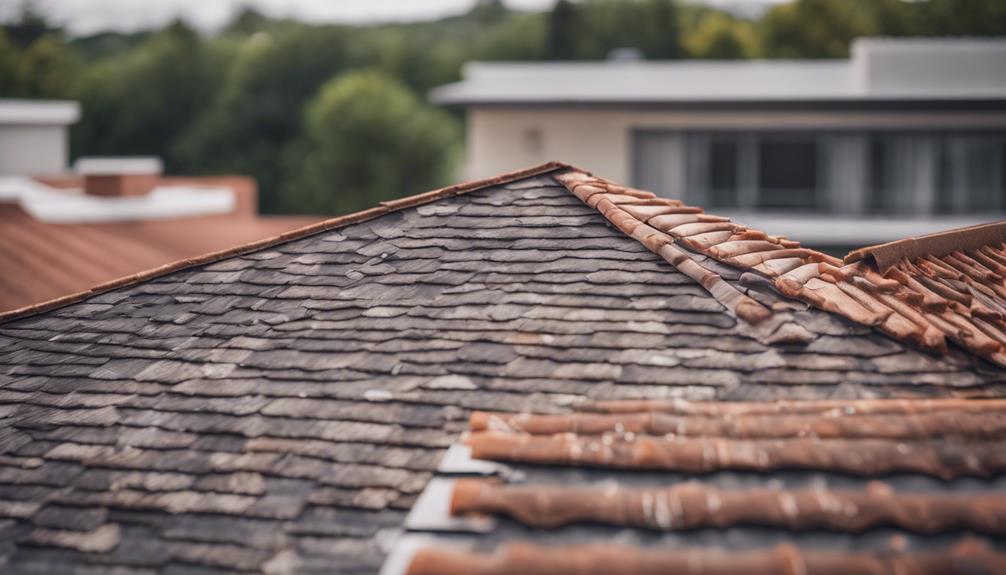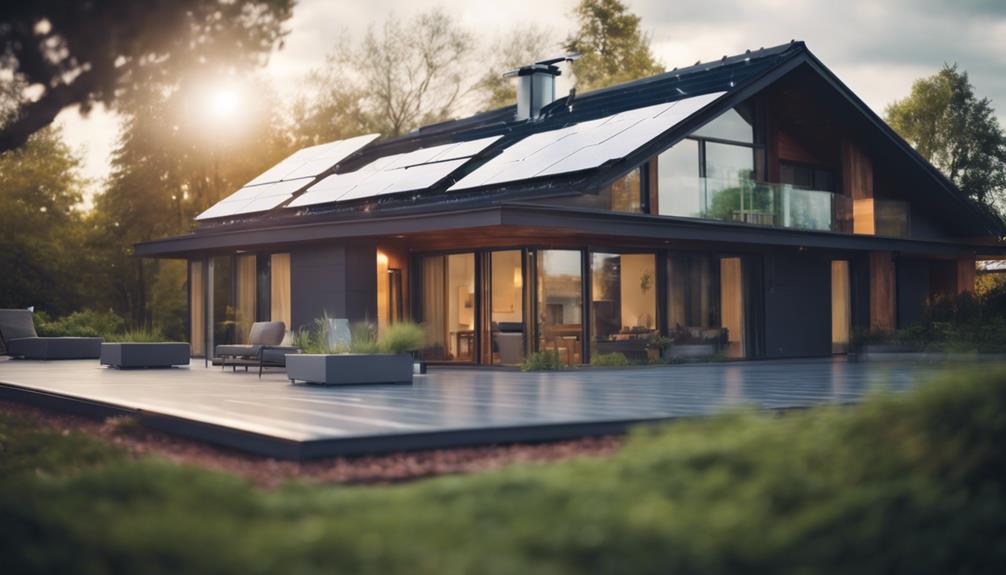What Are the Environmental Benefits of Single-Ply Roofing Systems?
Discover the environmental advantages of single-ply roofing systems and how they contribute to sustainable building practices.
Single-ply roofing systems offer a strong case for environmentally friendly building options. They are energy-efficient and durable, making them a great choice for those focused on sustainable construction.
Looking into the recyclable materials used and how these roofs help lower environmental impact gives us a better idea of their sustainable nature. Think about how these roofing systems fit into the bigger picture of environmental care and the push for greener building practices.
Maintaining single-ply roofing is crucial for its long life and good performance. Regular inspections and proper cleaning are key parts of this, but one often overlooked aspect is having a solid maintenance plan. Such a plan helps address issues quickly and proactively, saving both time and money in the long run.
In this maintenance guide, we’ll highlight the main strategies to boost the durability and efficiency of single-ply roofing systems.
What Makes Single-Ply Roofing Recyclable?
The recyclability of single-ply roofing systems is an important factor when evaluating their environmental impact and sustainability. Single-ply roofing membranes, such as TPO (thermoplastic olefin) and PVC (polyvinyl chloride), are known for their recyclability at the end of their service life.
Recycling these materials helps reduce the amount of roofing waste that ends up in landfills, contributing to a more sustainable construction industry.
One key advantage of single-ply roofing systems is that they can be easily separated from the roof deck and recycled without generating a significant amount of waste. This process aligns with the principles of a circular economy, where materials are reused or recycled to minimize environmental impact.
Additionally, the recycling of single-ply roofing membranes can help conserve resources by reducing the need for raw materials in the production of new roofing materials.
What Are the Energy-Saving Benefits of Single-Ply Roofing Systems?
The recyclability of single-ply roofing systems not only contributes to sustainability but also plays a significant role in enhancing energy efficiency aspects within the construction industry.
Single-ply roofing materials, such as TPO (Thermoplastic Olefin), PVC (Polyvinyl Chloride), and EPDM (Ethylene Propylene Diene Terpolymer), have been engineered to provide excellent thermal performance. These materials possess high solar reflectivity and thermal emittance properties, reducing the heat island effect commonly found in urban areas.
By reflecting a large portion of the sun’s heat away from the building, single-ply roofing systems help maintain lower indoor temperatures, decreasing the need for excessive air conditioning usage during hot seasons. Additionally, their ability to insulate the building effectively aids in reducing heat loss during colder months, thereby lowering heating requirements.
This thermal efficiency not only promotes a more comfortable indoor environment but also leads to decreased energy consumption and lower utility bills, making single-ply roofing systems a sustainable and cost-effective choice for energy-conscious construction projects.
In What Ways Can Single-Ply Roofing Help Lower the Environmental Impact of Buildings?

Improving sustainability by using single-ply roofing systems helps cut down on the environmental impact of construction projects. This is done through a variety of methods:
- Minimal Waste: Single-ply roofing systems are often prefabricated to fit the exact dimensions of the roof, leading to minimal on-site cutting and waste generation during installation.
- Recyclability: Many single-ply roofing membranes are recyclable at the end of their service life, diverting materials from landfills and reducing the need for virgin raw materials.
- Energy Efficiency: By reflecting sunlight and reducing heat absorption, single-ply roofing systems can contribute to lower energy consumption for cooling, thereby decreasing greenhouse gas emissions.
- Longevity: Single-ply roofing systems are known for their durability and long service life, reducing the frequency of roof replacements and the associated environmental impacts of manufacturing, transportation, and installation.
These factors combine to make single-ply roofing an environmentally responsible choice for construction projects aiming to reduce their environmental footprint.
How Can I Select Environmentally Friendly Roofing Materials?

When thinking about eco-friendly roofing options, it’s important to choose materials and methods that reduce environmental harm and support sustainability. Here are four key tips to help you make the best choice for your roofing materials:
1. Choose Recycled Materials: Opt for roofing materials that are made from recycled content, such as recycled metal or rubber shingles. Using recycled materials helps reduce waste and lessens the demand for new resources.
2. Prioritize Energy Efficiency: Select roofing materials that are known for their energy-saving properties, such as cool roofs that reflect sunlight and reduce heat absorption. Energy-efficient roofs can lower cooling costs and decrease greenhouse gas emissions.
3. Consider Longevity and Durability: Invest in roofing materials that have a long lifespan and require minimal maintenance. Durable roofs reduce the need for frequent replacements, hence decreasing waste generation over time.
4. Explore Green Roofing Options: Green roofs, which are covered with vegetation, offer numerous environmental benefits such as improved air quality, insulation, and stormwater management. Ponder incorporates green roofing practices to enhance sustainability and biodiversity.
Frequently Asked Questions
Are There Any Specific Certifications or Standards That Single-Ply Roofing Materials Must Meet to Be Considered Environmentally Friendly?
Yes, single-ply roofing materials must meet specific certifications and standards to be considered environmentally friendly. Certifications like Energy Star and standards such as ASTM D6754 for TPO roofs guarantee energy efficiency and sustainability in roofing systems.
How Does the Installation Process of Single-Ply Roofing Impact Its Overall Environmental Impact?
The installation process of single-ply roofing can impact its environmental footprint through factors like energy consumption, waste generation, and emissions. Proper installation techniques, material handling, and disposal methods are essential for minimizing environmental impact.
Can Single-Ply Roofing Materials Be Recycled Multiple Times?
Single-ply roofing materials can typically be recycled multiple times depending on the material type and quality. However, there may be limitations due to degradation over each recycling cycle. Proper sorting and processing are essential for maximizing recycling potential.
Are There Any Potential Drawbacks or Limitations to Using Single-Ply Roofing in Terms of Environmental Sustainability?
Regarding environmental sustainability, potential drawbacks of single-ply roofing include limited biodegradability, chemical off-gassing during manufacturing, and challenges in disposal. Further research is needed to enhance recycling processes and minimize environmental impact.
What Are Some Innovative Technologies or Advancements in Single-Ply Roofing That Are Specifically Designed to Improve Its Environmental Benefits?
Innovative technologies in single-ply roofing focus on enhancing environmental benefits by incorporating reflective surfaces, improved insulation materials, and recycling programs for old membranes. These advancements aim to increase energy efficiency, reduce waste, and promote sustainability in roofing systems.